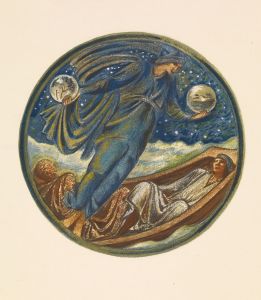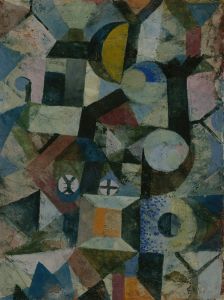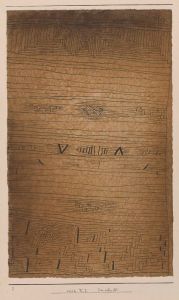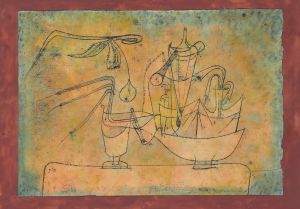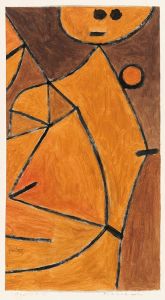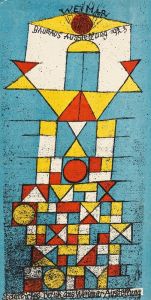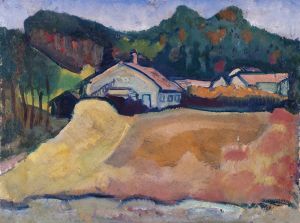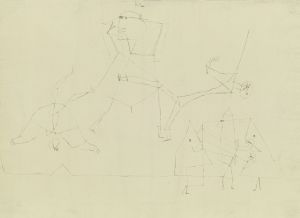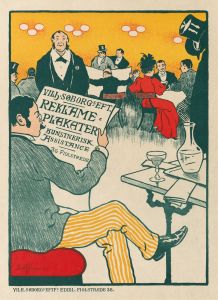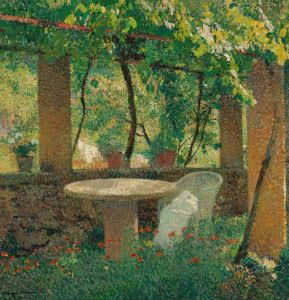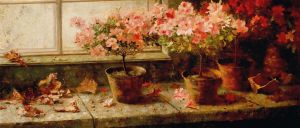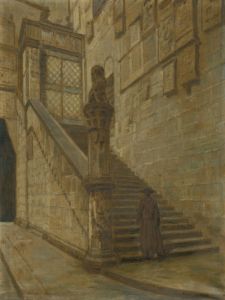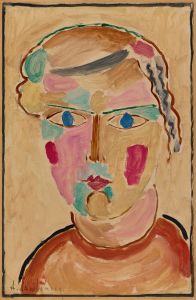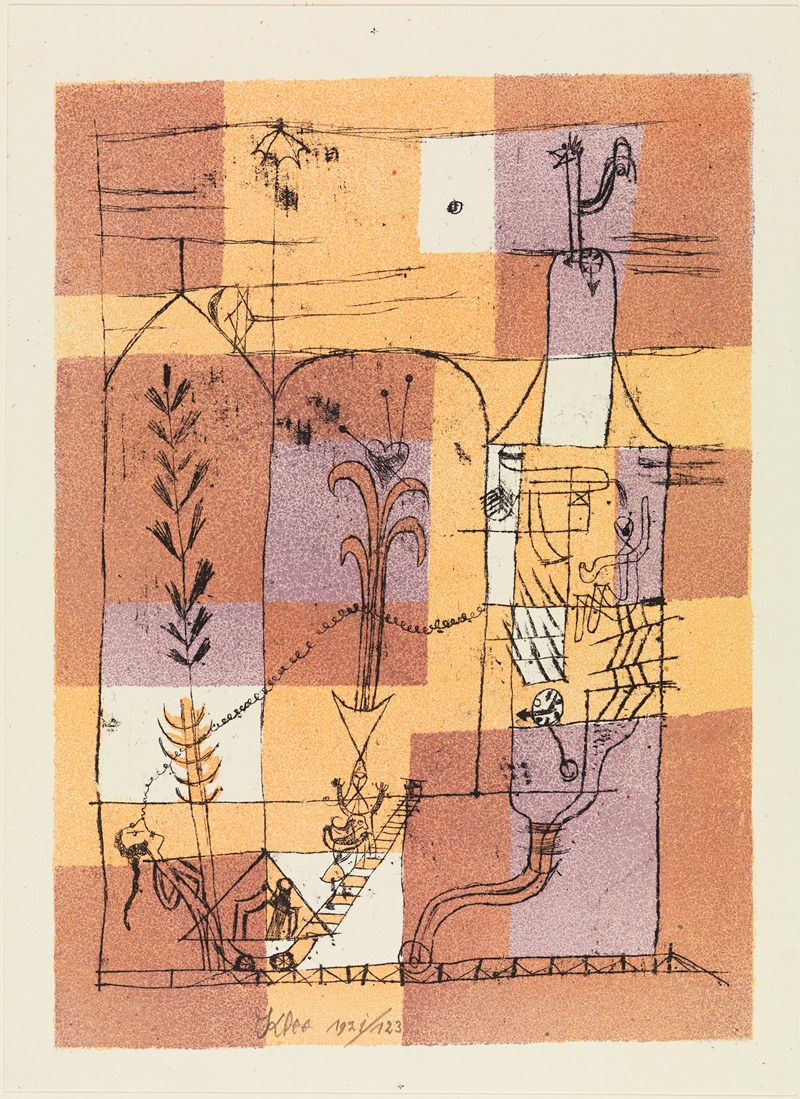
Hoffmanneske Szene
A hand-painted replica of Paul Klee’s masterpiece Hoffmanneske Szene, meticulously crafted by professional artists to capture the true essence of the original. Each piece is created with museum-quality canvas and rare mineral pigments, carefully painted by experienced artists with delicate brushstrokes and rich, layered colors to perfectly recreate the texture of the original artwork. Unlike machine-printed reproductions, this hand-painted version brings the painting to life, infused with the artist’s emotions and skill in every stroke. Whether for personal collection or home decoration, it instantly elevates the artistic atmosphere of any space.
Paul Klee's "Hoffmanneske Szene" is a notable work by the Swiss-born artist, created in 1921. Klee, a pivotal figure in the development of modern art, was known for his highly individual style that was influenced by movements such as Expressionism, Cubism, and Surrealism. His works often feature a unique blend of abstraction and figuration, characterized by a playful use of color and line.
"Hoffmanneske Szene" translates to "Hoffmannesque Scene," a title that suggests an inspiration drawn from the works of E.T.A. Hoffmann, a German Romantic author known for his fantastical and often darkly whimsical stories. Hoffmann's influence on Klee is evident in the dreamlike and sometimes eerie quality of the painting, reflecting the narrative style and imaginative worlds found in Hoffmann's literature.
The painting is a part of Klee's exploration of the subconscious and the fantastical, themes that were prevalent in his work during the early 1920s. This period was marked by Klee's association with the Bauhaus, a revolutionary art school in Germany where he taught alongside other avant-garde artists. At the Bauhaus, Klee developed his theories on color and form, which he applied to his paintings, including "Hoffmanneske Szene."
In "Hoffmanneske Szene," Klee employs a delicate balance of geometric shapes and organic forms, creating a composition that invites viewers into a whimsical yet structured world. The use of color is particularly significant, as Klee often used it not just for aesthetic purposes but as a means of conveying emotion and narrative. The palette in this work is both vibrant and subtle, with a harmonious blend of hues that contribute to the painting's mysterious and enchanting atmosphere.
Klee's technique in this painting, as in many of his works, involves a meticulous layering of paint and a careful consideration of line and form. His background in music, which he studied before fully committing to visual arts, is often cited as an influence on his rhythmic and harmonious compositions. This musicality is evident in "Hoffmanneske Szene," where the interplay of shapes and colors creates a visual symphony that resonates with the viewer.
The painting is housed in the collection of the Kunstmuseum Basel in Switzerland, which holds a significant number of Klee's works. The museum's collection provides insight into Klee's artistic evolution and his contributions to modern art. "Hoffmanneske Szene" is a testament to Klee's ability to merge the real with the imaginary, creating works that transcend conventional boundaries and invite viewers to explore the depths of their own imaginations.
Overall, "Hoffmanneske Szene" exemplifies Paul Klee's innovative approach to art, his fascination with the fantastical, and his mastery of color and form. It remains a celebrated piece within his oeuvre, reflecting the enduring influence of literary and artistic movements on his work.





